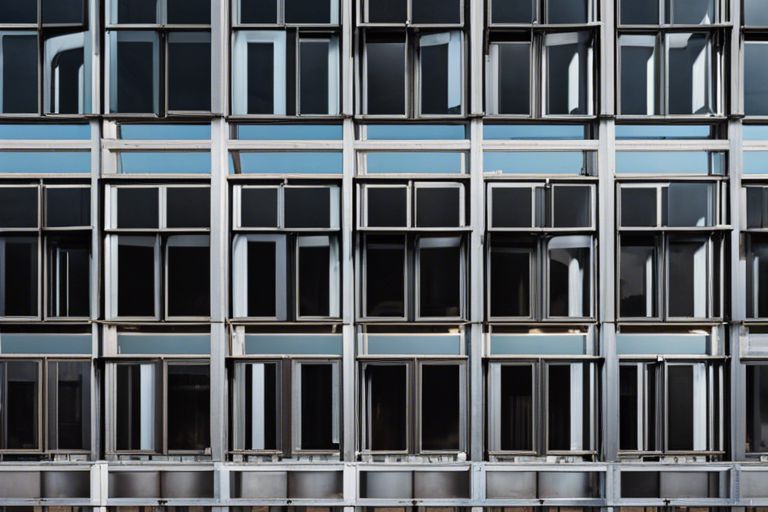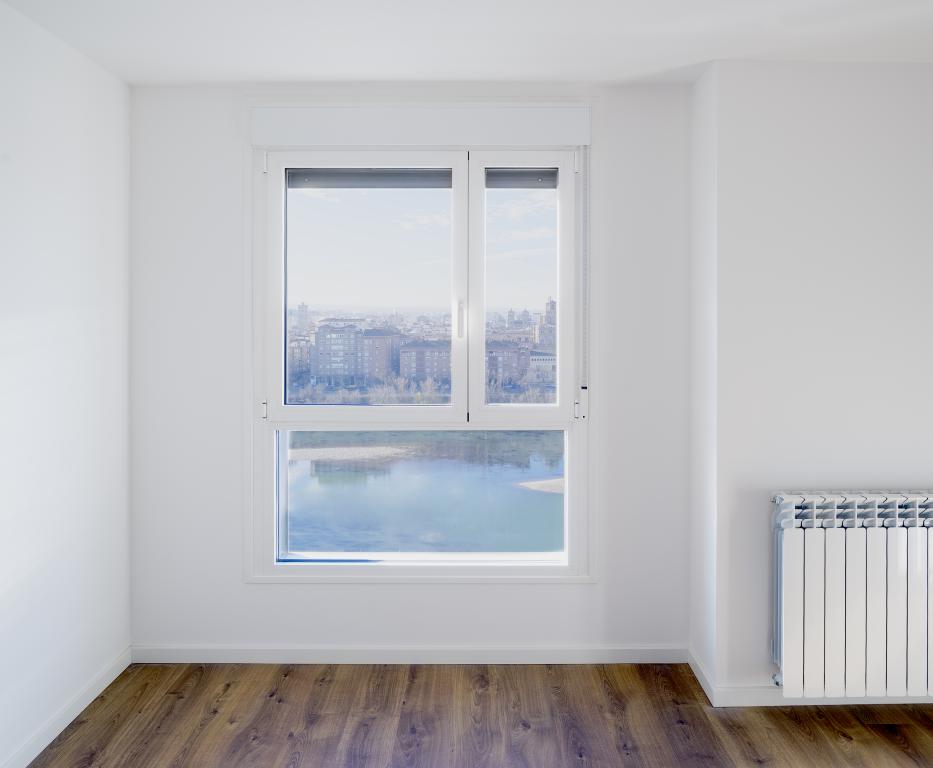When it comes to modern architectural design, curtain walling plays a significant role in both aesthetics and functionality. This type of non-structural cladding system is often used in commercial buildings to create a striking façade while allowing ample natural light to enter the premises. However, it is crucial to understand both the benefits and risks associated with curtain walling in construction. From enhancing energy efficiency and thermal performance to potential water leakage and maintenance issues, a comprehensive overview is essential for architects, engineers, and developers alike. Let’s investigate into the world of curtain walling and explore its impact on the construction industry.
Key Takeaways:
- Curtain walling is a non-structural outer covering of a building that is designed to keep out the elements whilst providing an aesthetically pleasing facade.
- Key components of curtain walling include glass panels, metal framing, and seals to prevent water ingress and ensure thermal efficiency.
- Benefits of curtain walling in construction include increased natural light, improved energy efficiency, and the ability to create striking architectural designs.

Basics of Curtain Walling
Components of a Curtain Wall System
In a curtain wall system, there are several key components that work together to create a visually appealing and functional facade. These include glass panels, aluminium or steel frames, sealants, thermal insulation, and fasteners. Glass panels are the most prominent feature of a curtain wall, providing natural light and views for the building occupants. The frames provide structural support and can be customised in various designs to achieve different aesthetic effects. Sealants are used to weatherproof the system, preventing water and air infiltration. Thermal insulation is crucial for energy efficiency, while fasteners hold everything together securely.
Proper installation and regular maintenance of these components are essential to ensure the longevity and performance of the curtain wall system. Neglecting any of these elements can lead to issues such as leaks, heat loss, or structural failures. Therefore, attention to detail and adherence to manufacturer guidelines are crucial during the design, construction, and maintenance phases of a curtain wall project.
Types of Curtain Walls
Curtain walls come in various types, each offering unique features and benefits based on the building’s requirements. The common varieties include unitised curtain walls, stick-built curtain walls, spider glass curtain walls, point-supported glass walls, and composite panel curtain walls. Unitised curtain walls are pre-assembled off-site for quick installation, while stick-built systems are constructed piece by piece on-site. Spider glass and point-supported glass walls use minimal framing for a seamless look, and composite panel curtain walls combine different materials for enhanced performance.
- Unitised curtain walls are popular for high-rise buildings due to their efficiency.
- Stick-built curtain walls offer more design flexibility but require longer installation time.
- Spider glass curtain walls create a striking visual impact with their minimalistic design.
- Point-supported glass walls are ideal for applications where transparency is key.
- Composite panel curtain walls combine aesthetics with functionality for versatile applications.
Understanding the differences between these types of curtain walls is essential for choosing the most suitable option for a specific project. Factors such as budget, design requirements, environmental conditions, and building height play a significant role in the selection process. Architects and designers need to carefully evaluate these factors to ensure the chosen curtain wall type meets the project’s objectives effectively.
- Unitised curtain walls are often favoured for their speed of installation and quality control benefits.
- Stick-built curtain walls allow for intricate detailing and adjustments on-site, ensuring a precise fit.
- Spider glass curtain walls are best suited for projects where a seamless, frameless appearance is desired.
- Point-supported glass walls offer a modern aesthetic and unobstructed views, enhancing the building’s aesthetics.
- Composite panel curtain walls provide a balance between performance and design flexibility, catering to a wide range of architectural styles.
Design Considerations
When it comes to implementing curtain walling in construction projects, various design considerations play a crucial role in determining the success of the final outcome. These considerations encompass both aesthetics and structural integrity, ensuring that the architectural vision is realised while meeting practical requirements.
Aesthetics and Architectural Expression
One of the primary considerations when designing curtain walling is the aesthetics and architectural expression it provides to the building. The facade design not only enhances the overall look of the structure but also reflects the design intent of the architect.
Structural and Environmental Factors
Structural and environmental factors play a pivotal role in the design of curtain walling. The structural stability of the system is crucial to ensure the safety and longevity of the building, while environmental considerations such as energy efficiency and sustainability are increasingly important in today’s construction industry.
- Structural stability is paramount in curtain wall design.
- Environmental considerations must be taken into account for sustainable construction.
Thou, the balance between structural integrity and environmental impact is a key aspect of curtain wall design, requiring careful consideration and expert input.

Installation and Maintenance
Installation Process
When it comes to installing curtain walling in construction, it is crucial to follow a meticulous process to ensure the structural integrity and aesthetic appeal of the building. Firstly, the structural support system must be properly in place, followed by the attachment of the curtain walling units. Careful attention must be paid to the alignment and sealant application to prevent any water leakage or air infiltration. Once installed, thorough quality checks and inspections are essential to verify the performance and safety of the curtain wall system.
Moreover, collaboration between the various trades involved, such as architects, engineers, and contractors, is crucial for a successful installation process. Communication and coordination are key to ensure that all components work together seamlessly. Proper training and supervision of the installation team are also paramount to avoid any errors or defects during the installation of curtain walling.
Maintenance and Repair
Regular maintenance of curtain walling is essential to prolong the lifespan and performance of the system. Routine inspections should be carried out to identify any signs of damage or wear and tear that may compromise the integrity of the curtain wall. Prompt repairs should be undertaken by qualified professionals to address any issues and prevent further deterioration.
Additionally, cleaning the curtain walling system regularly not only enhances the appearance of the building but also helps to prevent the build-up of dirt and debris that can impact the functionality of the system. It is important to use appropriate cleaning methods and products to avoid damaging the materials and finishes of the curtain wall.
For more extensive maintenance or repairs, it is advisable to consult with specialist contractors who have the expertise and experience in dealing with curtain walling systems. Their specialised knowledge can help in addressing any complex issues and ensuring the long-term durability of the curtain wall.
Challenges and Innovations
Common Challenges in Curtain Wall Construction
Constructing curtain walls in today’s architectural landscape comes with its fair share of challenges. One of the most common issues faced by construction professionals is ensuring air and water tightness of the curtain wall system. Any gaps or leaks can lead to water ingress, compromising the building’s integrity. Another challenge is thermal performance, as ensuring energy efficiency while maintaining aesthetic appeal can be a complex balancing act.
Furthermore, the complexity of curtain wall systems can pose challenges during installation. Coordinating between different trades, such as glass manufacturers, metal fabricators, and installers, requires meticulous planning to ensure a seamless construction process. Quality control is also crucial to address issues such as material defects or installation errors that can arise during the construction phase.
Recent Innovations and Developments
Recent years have seen significant advancements in curtain wall technology to address the challenges faced in construction. New materials and coatings have been developed to improve the performance of curtain walls, enhancing their durability and energy efficiency. Additionally, integrated building information modelling (BIM) systems have revolutionised the design and construction process, allowing for better coordination and communication between project stakeholders.
One of the most exciting innovations in curtain wall construction is the adoption of sustainable practices. Green curtain wall systems not only improve energy efficiency but also contribute to the overall sustainability of a building. Incorporating renewable energy sources such as solar panels into curtain wall designs is becoming increasingly popular, demonstrating a commitment to environmental responsibility in construction projects.

Curtain Walling in Construction – An Overview
Curtain walling is a vital component of modern construction, providing both aesthetic appeal and functional benefits to buildings. From enhancing energy efficiency to allowing natural light into a structure, curtain walls offer numerous advantages. By understanding the various types of curtain wall systems available and their installation processes, construction professionals can make informed decisions to meet the design and performance requirements of a project. As an integral part of contemporary architecture, curtain walling continues to evolve, offering innovative solutions for sustainable and visually striking building facades. Embracing the versatility and efficiency of curtain wall systems can elevate the construction industry towards more sophisticated and environmentally conscious practices.
FAQ
Q: What is curtain walling in construction?
A: Curtain walling in construction refers to a non-structural outer covering of a building that is designed to keep out the elements. It is typically made of lightweight materials such as aluminium and glass, and is used to create a visually appealing facade.
Q: What are the benefits of using curtain walling in construction?
A: Curtain walling offers several advantages, including improved thermal efficiency, enhanced natural light penetration, sound insulation, and the flexibility to create customised designs. It also allows for easy maintenance and repair of individual components.
Q: What are the key considerations when incorporating curtain walling into a construction project?
A: When using curtain walling in construction, factors such as structural integrity, weather resistance, thermal performance, and compatibility with other building components must be carefully considered. It is essential to work with experienced professionals to ensure that the system is installed correctly and meets all safety standards.






